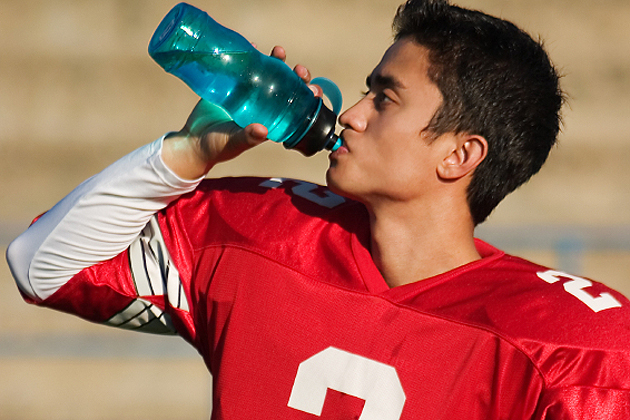
Heat-related illness accounts for about 700 deaths a year and is the nation’s No. 1 weather-related killer, according to the Centers for Disease Control and Prevention. The dangers of heat stroke are especially prevalent among high school and college athletes, who often engage in intense conditioning and ‘two-a-day’ practice sessions in the summer months to get ready for competition. Yet much can be done to prevent tragic deaths from heat stroke on the athletic field.
University of Connecticut kinesiology professor Douglas J. Casa is a nationally-recognized expert in preventing heat-related illnesses, including exertional heat stroke. Casa is chief operating officer of UConn’s Korey Stringer Institute, whose mission is the prevention of sudden death in sport. The institute is part of UConn’s Neag School of Education.
Here’s what Casa has to say:
“Exertional heat stroke is the most dangerous of several heat-related illnesses, and is only recognizable if you know what to look for. When exertional heat stroke does occur, rapid and proper treatment has yielded a 100 percent survival rate. The recent statistics regarding exertional heat stroke are not encouraging, since they show that death from exertional heat stroke is more prevalent in the past 5 years than at any time in the past 35 years.
“Exertional heat stroke occurs when a person’s body temperature climbs at a faster rate than the body can cool itself. It usually occurs in the heat, but not always.
“The intensity of an activity is the main thing that drives your body temperature up. But one of the key factors in the risk for exertional heat stroke is outside humidity. So it is not just the outside air temperature but the outside temperature plus the humidity that must be taken into account when assessing the dangers of heat illness.
“Some of the symptoms of exertional heat stroke include disorientation, dizziness, headache, nausea, excessive body temperature (>105 degrees Fahrenheit), profuse sweating, and combativeness. Due to the presence of altered mental status in potential victims of heat illness, those supervising the athletes (preferably the athletic trainer) need to be able to recognize the problem. The athletes themselves cannot always determine the enormity of the situation.
“The key to surviving an exertional heatstroke is what you do in the first five to 10 minutes. You’ve got to begin cooling aggressively with whole-body cooling. Cold-water immersion in a tub of ice water is the best way to cool someone suffering exertional heat stroke, but you’ve got to get that going within a few minutes after an athlete collapses. After cooling has been initiated, activate emergency medical services by calling 911. The concept is ‘cool first, transport second.’”
CONTACT INFORMATION:
Douglas Casa, Ph.D., ATC, FACSM, FNATA
Phone: 860-486-3624 or 860-486-0265
E-mail: Douglas.casa@uconn.edu



